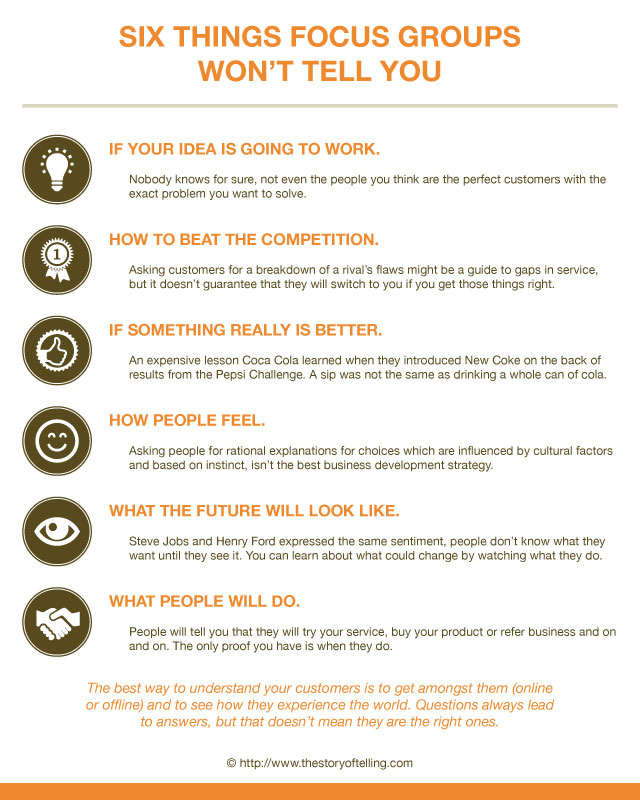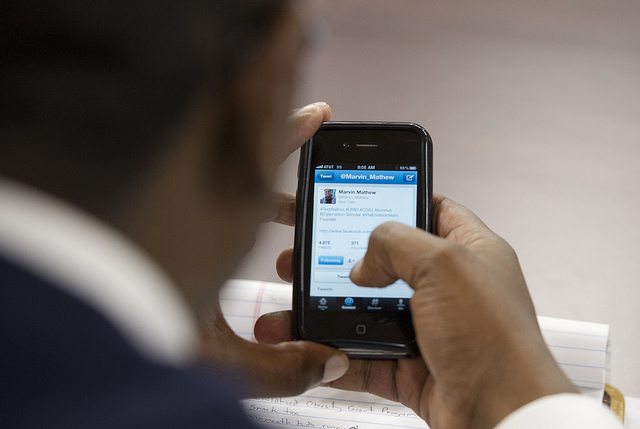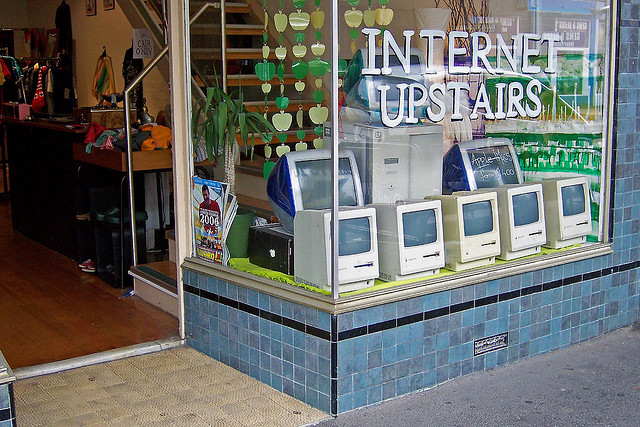Search Results: why this, why you, why now
Six Things Focus Groups Won’t Tell You
 If you’re a fan, you may remember the scene in Mad Men where Peggy—fairly new to the job, joins the other girls from the typing pool in a lipstick testing experiment. All the while the ad executives are secretly looking on and taking notes from behind a two way mirror.
If you’re a fan, you may remember the scene in Mad Men where Peggy—fairly new to the job, joins the other girls from the typing pool in a lipstick testing experiment. All the while the ad executives are secretly looking on and taking notes from behind a two way mirror.
The ad guys were smart enough to know that if they showed the lipstick to the girls and asked them a bunch of questions they wouldn’t necessarily get to the truth. Far better to allow them to experience the product, watch what they did and how they reacted.
Mostly when we don’t know what our customers want we ask them.
If you ask the woman who chooses the bright pink lipstick why she liked it she will try to find some rational, fact based explanation to explain her decision. The truth is she may not know why she chose it other than ‘it felt right’ (or maybe it matched her hair), and it probably messes up the spreadsheet. We’re looking for proof and as Rory Sutherland would say, “Numbers however rubbish they are have the appearance of objectivity.”

Photo by Scott Moore.
How To Communicate Your Difference
filed in Marketing, Storytelling, Strategy
 There is a place where many entrepreneurs, (maybe you) and even global corporations who look like they have got it all together, (maybe yours), get stuck when trying to differentiate themselves in the marketplace. They hit a wall when they begin to articulate what’s unique about what they do and why it should matter to their customers. The reason they get stuck is because they’re starting in the wrong place—by trying to find the words before they work on the understanding.
There is a place where many entrepreneurs, (maybe you) and even global corporations who look like they have got it all together, (maybe yours), get stuck when trying to differentiate themselves in the marketplace. They hit a wall when they begin to articulate what’s unique about what they do and why it should matter to their customers. The reason they get stuck is because they’re starting in the wrong place—by trying to find the words before they work on the understanding.
Difference doesn’t manifest in well-crafted descriptions, value propositions and vision statements that live in A4 files or posters in the sales department. Differentiation isn’t just described or articulated, it’s perceived and felt.
Re-arranging the words that describe you isn’t going to get you to where you want to go.
You need to dig deeper.
And sometimes even when we do know what makes us different we are afraid to own and communicate it. We’re afraid to stand out for being good at that thing that we’re good at, in the precise way that we are good, just in case that’s not enough for everyone. We get scared about putting hearts on business book covers or we worry that choosing to be small on purpose makes us less, when it probably makes us more (maybe even the best driving school in Perth).
The irony is that not being enough for everyone means you’re exactly right for the people who matter. Separating yourself from the pack starts by knowing what you’re proud to stand for and owning it. Once you do that the words will come.
Image by oddharmonic.
Knowing ‘The How’ Is Not Enough
 When that friend you haven’t seen for ages shows up at the party in a figuring hugging dress having dropped two sizes, the first thing you say is, “You look great!
When that friend you haven’t seen for ages shows up at the party in a figuring hugging dress having dropped two sizes, the first thing you say is, “You look great!
The second thing you say is, “How did you do it?”
And so it goes when we see evidence of any kind of success in life and in business.
If only Samsung could work out exactly how Apple grew a cult following. If only we knew how to get as much engagement on Twitter as the Oreo cookie. If only there was a step-by-step guide to doing work that touches people.
We want the specifics, the tactics, the fool-proof method.
It turns out that success is less dependent on ‘the how’ and more dependent on ‘who for’ and ‘why’.
It’s far more important to have something to say—something that the right people want to hear or care about, than to be a master of the tools and tactics.
Image by Maryland Gov.
How Are You Creating Value?
 Think about your favourite airline or a product you use every day and the supermarket you feel most comfortable shopping at. Now think about why you keep going back. What is it that this business delivers? The airline most likely sells similar seats, with average legroom, at around the same price as their competitors. The product you love probably doesn’t have more features than another leading brand’s. The supermarket stocks many of the same things as the one at the other end of the street.
Think about your favourite airline or a product you use every day and the supermarket you feel most comfortable shopping at. Now think about why you keep going back. What is it that this business delivers? The airline most likely sells similar seats, with average legroom, at around the same price as their competitors. The product you love probably doesn’t have more features than another leading brand’s. The supermarket stocks many of the same things as the one at the other end of the street.
And yet somehow this business or brand gave you reasons to choose them.
Try this….pick one brand, cafe, app or store that you wouldn’t want to live without and make a list of the reasons why. Now stand in your customer’s shoes and make that same list for whatever you sell, design, develop or serve.
How are you creating value beyond components, ingredients, features and benefits that your competitors could copy tomorrow? Your competitive advantage may not be as limited as you think.
Image by Unsplash.
Play To Your Strengths
 If you look hard enough at what’s going right (and sometimes wrong) in a business there are always lessons to be learned. Take the story of Tom the decorator who built a great business over many years, then suddenly seemed to lose his way. Part two of that story explains why Tom succeeded in the first place and why things have gone awry of late.
If you look hard enough at what’s going right (and sometimes wrong) in a business there are always lessons to be learned. Take the story of Tom the decorator who built a great business over many years, then suddenly seemed to lose his way. Part two of that story explains why Tom succeeded in the first place and why things have gone awry of late.
While Tom apprenticed as a decorator and knows a lot about colours and paint finishes and surface preparation, he actually doesn’t enjoy the solitary work of painting. Tom is a people person and a terrific salesman. He has a confident, firm handshake, knows how to look people in the eye and has their trust within minutes of meeting. Tom is also a brilliant organiser and manager. He knows how to hire the right man for the job and can give him very clear instructions. Tom has a way of making his team aware of the standard he expects and he commands their respect.
Tom is so good at selling that he has scaled his business rapidly and taken on more staff to do the work he doesn’t enjoy so much (although he never acknowledges this). Tom’s circumstances have changed lately. His cash flow is not what it was because he has just returned from a recent year-long overseas trip, so he’s not hiring a team to help with the jobs he gets during these first few lean months while he builds up his reserves of cash. But Tom is doing his business more harm than good. He is making a short term tactical decision and has abandoned the strategy that has served him so well in the past. Now he’s begun to take shortcuts, to look for quick wins and most important of all he’s stopped playing to his strengths.
Tom’s gift was never that he applied paint better than any other decorator in town. His gift was always that he knew how to make people feel like they mattered. He just didn’t realise that’s what he did for a living.
The irony is that while we spend time on our business goals, working hard to hit targets we set; sometimes we can’t explain how we did it, why it worked or how we really contributed to making it all happen. It’s never been more important to take time to work out who you are and why that matters to your business.
Image by Chris Beckett.
Why A Good Idea Is Not Enough
filed in Marketing, Storytelling, Strategy
 It took at least 40 years for the computer to go from being a series of ideas and advances to a commercial success.
It took at least 40 years for the computer to go from being a series of ideas and advances to a commercial success.
The difference between a good idea and a commercial success is context—the understanding about where that idea fits, how it will be useful in the world and who will care about it. It wasn’t until companies like IBM, Apple and Microsoft began to figure this out that the magic happened. It was the realisation, as Nicholas Negroponte put it, that computing was not about computers, but it was about living, and that made all the difference.
One of the biggest challenges an entrepreneur or innovator has is understanding how to make his ideas resonate. We tend to have no shortage of ideas, but we struggle to tell the story of how they are going to be useful in the world and why they will matter to people.
If you can answer the following two questions then you are on your way to doing that.
1. What is your unique ability?
2. How does that translate to value for people in a marketplace?
All the ideas, technology and domain knowledge in the world are worthless unless we can find ways to understand and communicate why they should matter to people.
Image by Paul.
Are You Ready To Tell People About You?
filed in Marketing, Storytelling, Strategy
 Have you ever come away from being asked the, ‘so, tell me about you’ question in a professional setting and felt like you nailed it—even just a little bit? How do you sum up the essence of who you are, what you stand for and what you’re capable of without sounding like an over-rehearsed egotist, or alternatively like someone just stuffed your mouth full of cotton wool? The first step is to know who you are and what you stand for and to be comfortable with that. This understanding of your personal story informs your work and it’s something most of us don’t take half enough time to explore. So, tell me about you….
Have you ever come away from being asked the, ‘so, tell me about you’ question in a professional setting and felt like you nailed it—even just a little bit? How do you sum up the essence of who you are, what you stand for and what you’re capable of without sounding like an over-rehearsed egotist, or alternatively like someone just stuffed your mouth full of cotton wool? The first step is to know who you are and what you stand for and to be comfortable with that. This understanding of your personal story informs your work and it’s something most of us don’t take half enough time to explore. So, tell me about you….

Here’s a one-page about you PDF of these questions for you to scribble on so your answers are top of mind next time you need them.
There’s one more thing to consider when you are asked this question though. It turns out that part of the answer lies in understanding why the person is asking the question in the first place. Usually when someone asks ‘about you’ in a business or sales situation, what they really want is a reason to feel safe about the judgement call they are about to make next. Perhaps they are a human resources manager, someone who is accountable to a boss, or maybe a prospective client with a limited budget wondering if you can deliver what they need? What they believe about you and that subsequent decision may impact their future and not just yours.
There are two ways to approach the answer then—the first is to give them the answer they want. The second is to be true to who you are as you gain their trust. It’s tempting to try give the right answer, but it’s far better in the long run to show up as yourself and be hired, invited or validated for the real you, than to sell people on an illusion only to disappoint them later.
Image by Tom Ellefsen.
What Are Your Customer’s Triggers?
 We mostly think of buying as an isolated act, something our customers do in the moment. But it’s probably more useful to think of buying as a behaviour. A behaviour is an action or reaction which is triggered and conditioned. We look in the fridge at 8pm and notice that we’re running low on milk, that’s our trigger to jump in the car before the supermarket closes. The light turns green and that’s our trigger to go.
We mostly think of buying as an isolated act, something our customers do in the moment. But it’s probably more useful to think of buying as a behaviour. A behaviour is an action or reaction which is triggered and conditioned. We look in the fridge at 8pm and notice that we’re running low on milk, that’s our trigger to jump in the car before the supermarket closes. The light turns green and that’s our trigger to go.
Digital entrepreneurs build products and services with apps, games and platforms for behaviours. Our use of the digital products and platforms we can’t live without is behaviour driven. How long is it before a bored commuter whips out his iPhone while he stands waiting for a bus?
BJ Fogg, who runs the Persuasive Technology Lab at Stanford University, created a simple formula for behaviour change. The Fogg Behaviour Model suggests that three things need to be in place for a behaviour to occur.
TRIGGER—Do this now.
ABILITY—Can do it.
MOTIVATION—Want to do it.
Marketers of physical products have been slower to recognise buying as a behaviour. As marketers we often think of buying as an exchange that customers can be persuaded into with discounts and special offers. Savvy marketers see buying as a behaviour that they have the power to influence with triggers and not just persuasion. Starbucks built a billion dollar business by creating and leveraging triggers for able and motivated customers. Warby Parker changed the buying trigger for people who needed prescription glasses who only bought a new pair once every two years when their prescription ran out. Black Milk Clothing releases limited edition, time limited ranges. Apple’s product launches are triggers of legend.
Triggers lead to actions that can become behaviours. As marketers we spend a lot of time focusing on our customer’s motivation and ability, but as Fogg mentions we need all three things to be in place to create behaviours and it’s those behaviours that build sustainable businesses. Perhaps we need to start thinking more like great user experience designers?
Don’t just focus on the moment your customer pulls out her credit card. Think about how, why and how often she got to that point and how you might influence that in the future.
Image by Amanda Tipton.

 When I was fifteen it cost fifty pence to go a see U2 play live to a tiny audience in the function room of the Rathfarnham Inn. A group of girls from my school who were die hard fans and too young to get into a pub at night applied three layers of eyeliner, half a can of hairspray and bluffed their way in every week. Of course once the word was ‘out there’ and U2 became the next big thing the fifty pence gigs came to an end before I was old enough to go. They are still my heroes.
When I was fifteen it cost fifty pence to go a see U2 play live to a tiny audience in the function room of the Rathfarnham Inn. A group of girls from my school who were die hard fans and too young to get into a pub at night applied three layers of eyeliner, half a can of hairspray and bluffed their way in every week. Of course once the word was ‘out there’ and U2 became the next big thing the fifty pence gigs came to an end before I was old enough to go. They are still my heroes.